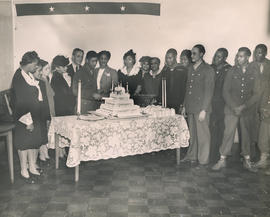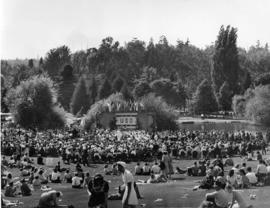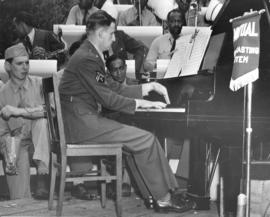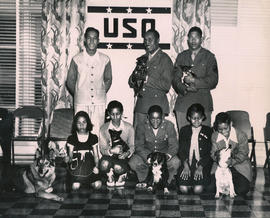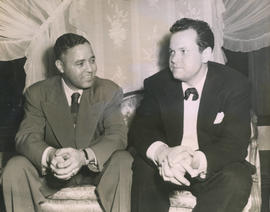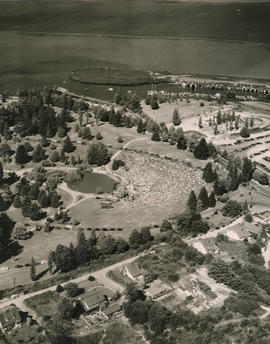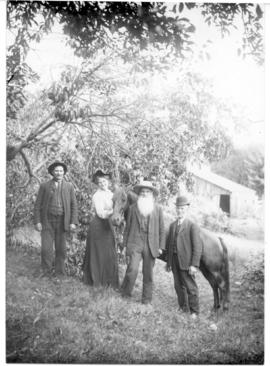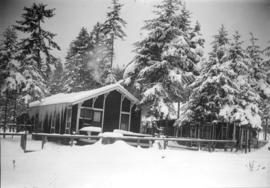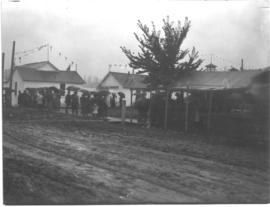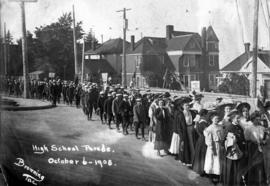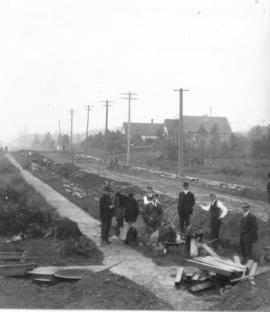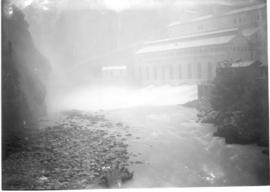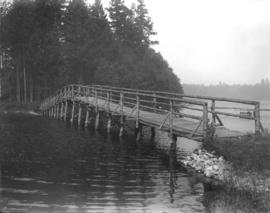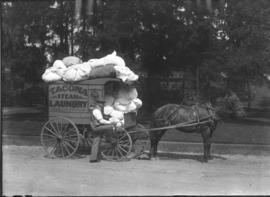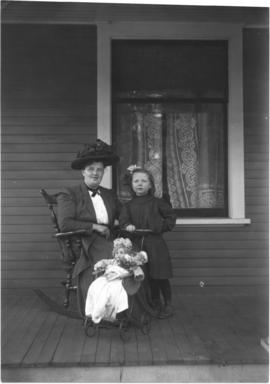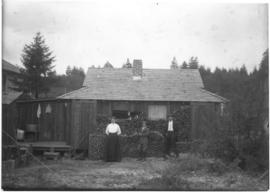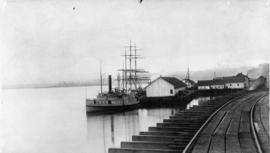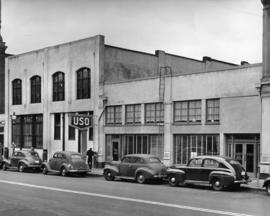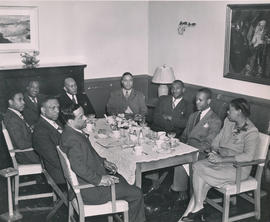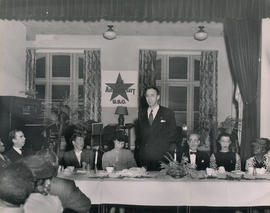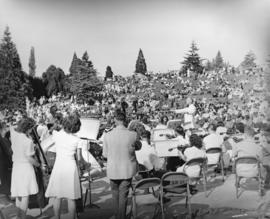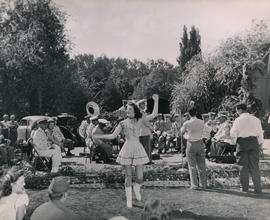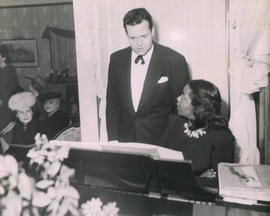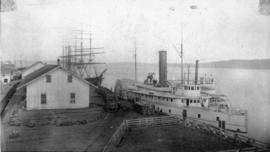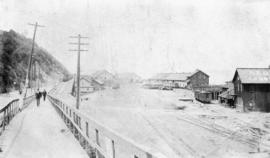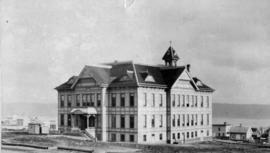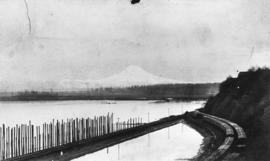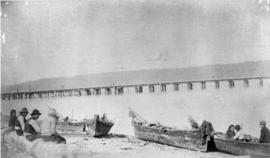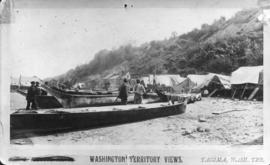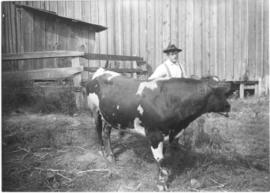This is the original Central School, built in 1883 for $18,000 and located at 1114 S Altheimer (then S G St), now the area of Bates Technical College. It was modeled after the Euclid Avenue School of Cleveland, Ohio, by architect Joseph Sherwin of Portland. It stood out along the Tacoma skyline with its 90-foot bell tower visible for miles. The school contained twelve rooms and was considered a showplace for the city. Rapid growth made the enrollment climb to 964 by 1886, taught by a staff of 18 teachers. Remodeling and additions to the school occurred before the school moved its 1000 elementary students to a new Central School located at So. 8th & Tacoma Ave. So. in 1913. The new Central School cost $165,000, almost ten times the cost of the original school. The old Central School was demolished in 1914 and served as a hobo shelter for a few months prior to its demolition. (Olsen: For the Record, p. 47-48-various photographs) King 009, TPL 1103.
Back of photo:
Central school, S.W. corner of S.W. and G. St now the Bates Vocational School Tacoma, Wash.
